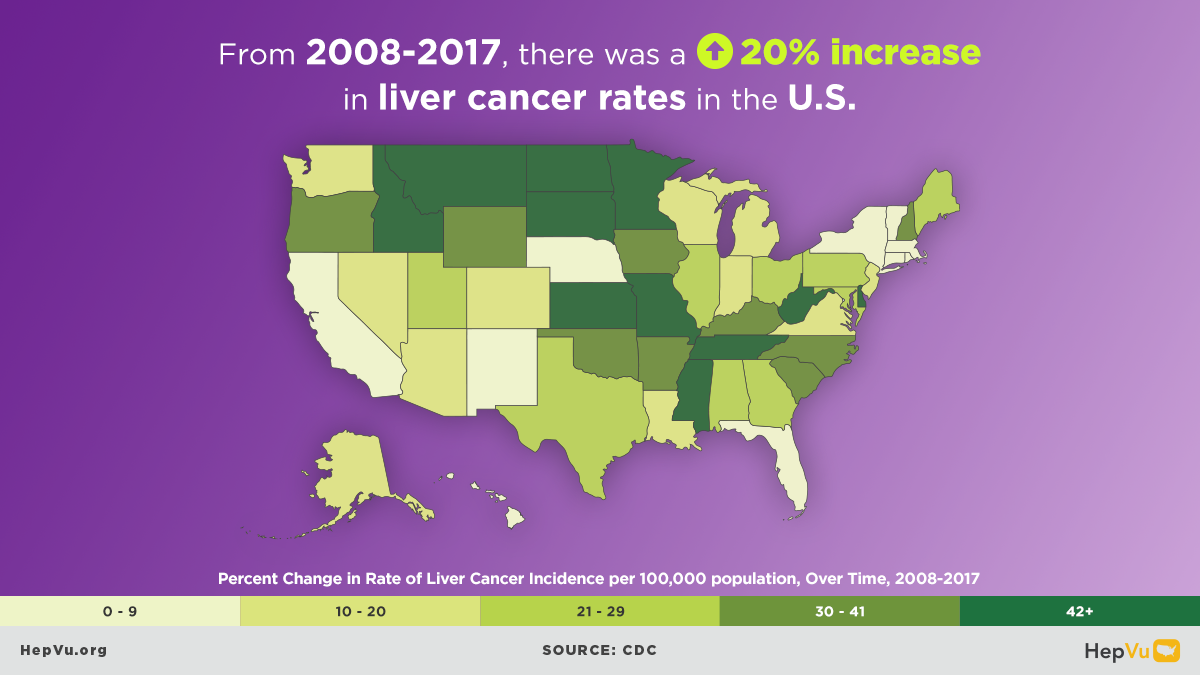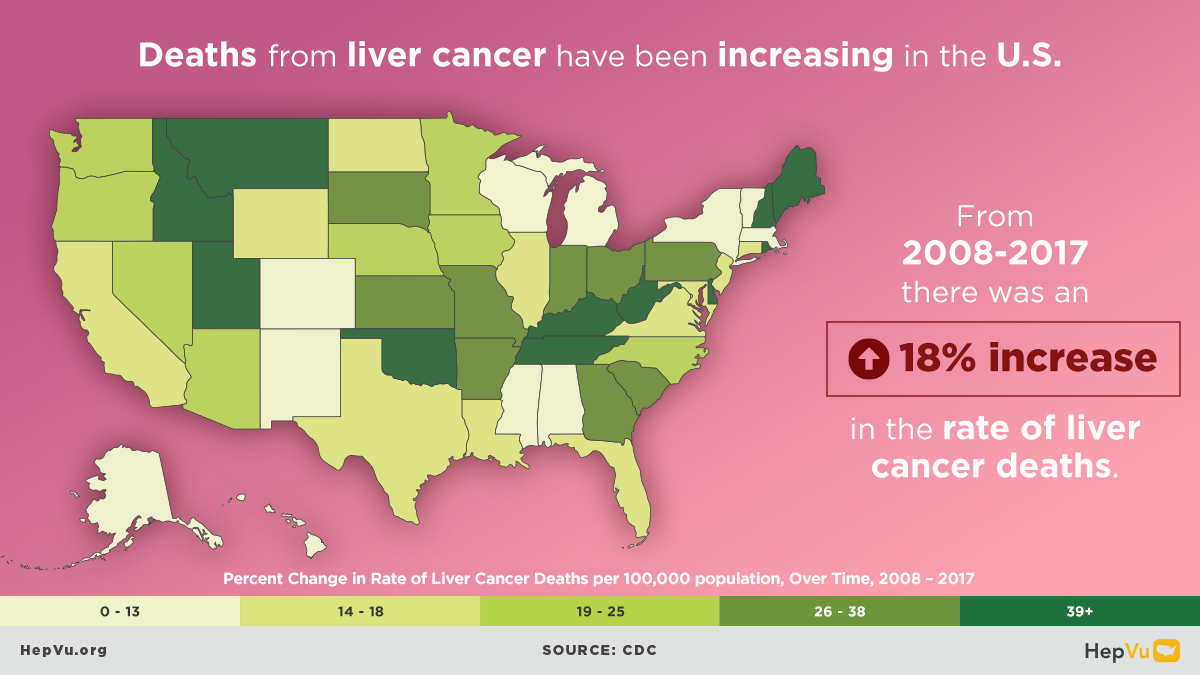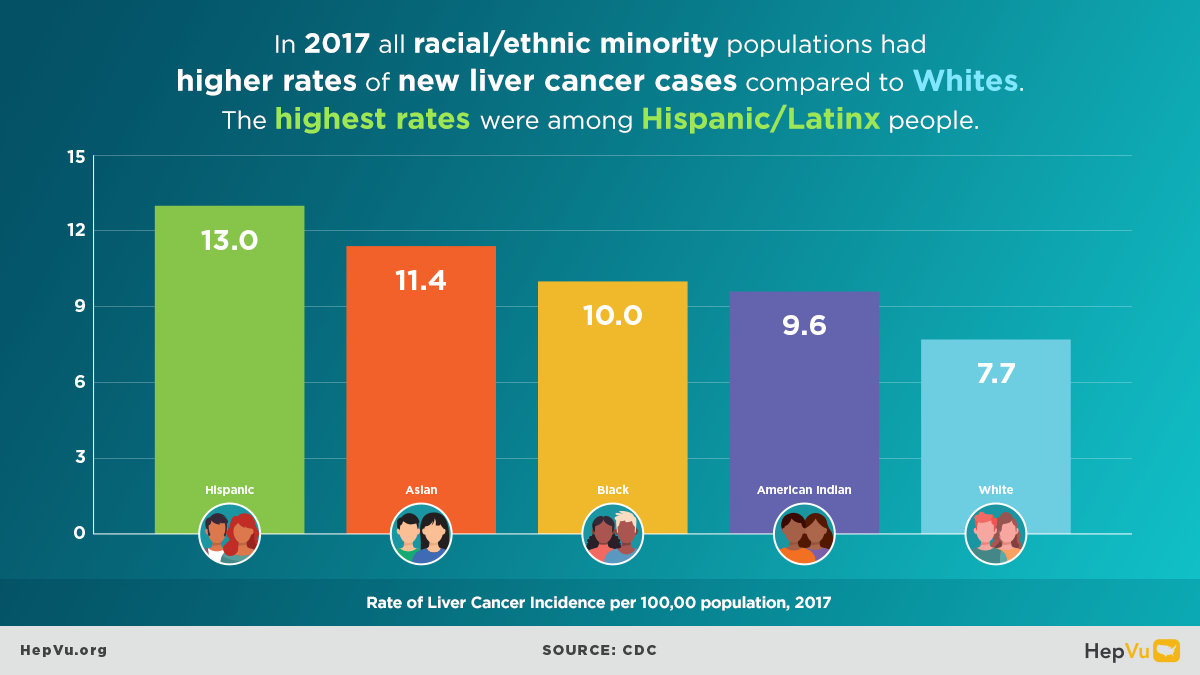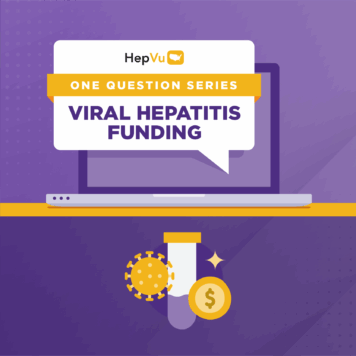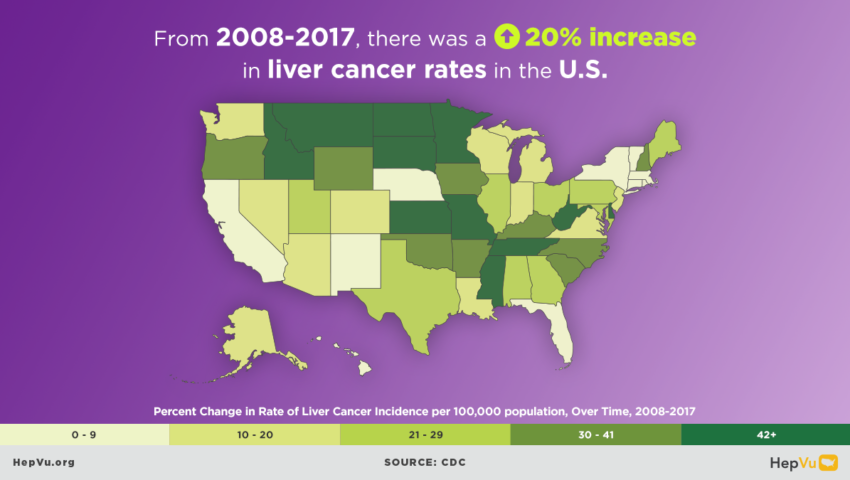
One of the most common risk factors for liver cancer worldwide is chronic viral hepatitis.
There are several causes of liver cancer but long-term, untreated infection with Hepatitis B and Hepatitis C are the leading causes globally. Increased screening, vaccination, and treatment for Hepatitis B and C infections can prevent additional future complications for patients.
Untreated viral hepatitis infections can lead to cirrhosis, in which liver cells are damaged and replaced by scar tissue, putting individuals at increased risk for liver cancer. Other factors that can lead to liver cancer include heavy alcohol use, tobacco use, obesity, and type 2 diabetes.
Further disparities in liver cancer cases exist among different populations, by race, and by age. In 2017, the number of new liver cancer cases was highest among those aged 60 to 69 years old, as the longer Hepatitis C and Hepatitis B are left untreated, the more likely that it could progress to liver cancer. In 2017, the rates of new liver cancer cases per 100,000 population were higher among racial/ethnic minority populations than White individuals (7.7), such as those for Asian (11.4), Black (10.0), American Indian (9.6), with the highest rates among the Hispanic/Latinx (13.0) population.
From 2008 to 2017, the top five states with the largest increase in liver cancer rates were:
- North Dakota (107% increase)
- South Dakota (68% increase)
- Minnesota (61% increase)
- Montana (56% increase)
- Kansas (55% increase)
Similar trends appear in deaths from liver cancer across the U.S., with an 18% increase in the rate of liver cancer deaths from 2008 to 2017.
The link between viral hepatitis and liver cancer is more evident when comparing rates of new liver cancer cases between men and women. From 2013 to 2016, Hepatitis C prevalence was twice as high among men compared to women. Since Hepatitis C is a leading cause of liver cancer in the U.S., it is not surprising that the rate of new liver cancer cases in 2017 was three times higher among men compared to women.
To learn more about how liver cancer and viral hepatitis affect communities nationwide, explore HepVu’s resources below:
- Visualize Hepatitis C prevalence and mortality with data stratifications on HepVu’s interactive map.
- Read expert-led blogs to deepen your understanding of viral hepatitis and liver cancer.

